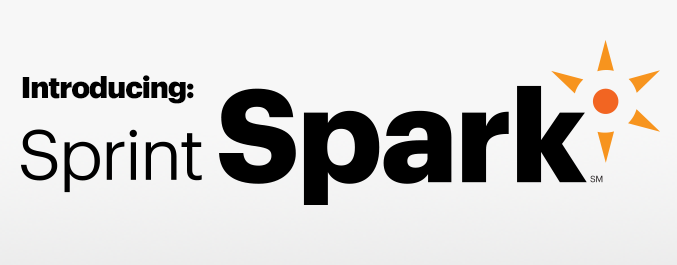Sprint Announces Spark - Its Tri-Band LTE Network
by Brian Klug on October 30, 2013 1:50 PM EST- Posted in
- Smartphones
- Sprint
- LTE
- Mobile

Today Sprint announced the official name for its new tri-band LTE network, Sprint Spark. For those who have been following operator rollouts of LTE in the US, today's announcement from Sprint doesn't come as much of a surprise – it's been planning on running LTE on bands 25, 26, and 41 (1900 MHz, 850 MHz, and 2.5 GHz) for a while now. We've seen a few tri-band handsets pop up recently destined for Sprint, I noted the HTC One max was a tri-band Sprint LTE device in disguise in my review earlier this week, and fellow wireless aficionado Andrew Shepherd caught the LG G2 also packing tri-band Sprint LTE. Today as part of its Spark announcement, Sprint explicitly named the One max, G2, S4 Mini, and Galaxy Mega as its first tri-band smartphones. Sprint's first Spark markets are New York, Los Angeles, Chicago, Tampa and Miami.
Sprint previously was running 5 MHz FDD-LTE on Band 25 which gave it a maximum downstream throughput of 36 Mbps. Today as part of the announcement Sprint has both made LTE rollouts on bands 26 and 41 official, and has stated it has the spectrum for between 50-60 Mbps of downstream throughput. My expectations are one or more 20 MHz TDD-LTE carriers on Band 41 and up to 5 MHz FDD-LTE on Band 26 depending on the market from Sprint.
I'm not entirely certain, but it's likely they're referring to a 20 MHz TDD-LTE carrier on Band 41 for their '50-60 Mbps' claim since that number seems closely aligned with the 63 Mbps downlink, 17 Mbps uplink configuration I've seen given for Qualcomm's Category 3 modems. Moving forward Sprint apparently demonstrated up to 1.3 Gbps of throughput using carrier aggregation and 8x8 MIMO which begins with LTE-Advanced (3GPP release 10). Sprint has gone with Alcatel Lucent, Nokia Solutions, and Samsung Mobile for its Sprint Spark 8x8 Band 41 deployment.
At present the tri-band handsets that have been mentioned don't support those intra or inter band carrier aggregation combinations, or 8x8 MIMO, but rather single carrier operation with the more pragmatic 2x2 MIMO configuration.










33 Comments
View All Comments
Tehk17 - Wednesday, October 30, 2013 - link
Sprint's service is great in Northern California. I have 5 bars most of the time and LTE has been in my area for about a year now.Every other provider has terrible service here. Usually one or zero bars, or simply no service at all, and no LTE.
That's just my experience.
That said, I went East for a few weeks and Sprint's service was pretty bad on the most part.
Reikon - Wednesday, October 30, 2013 - link
Where in NorCal? It's terrible pretty much everywhere in the Bay Area.Bob Todd - Wednesday, October 30, 2013 - link
You were one of 360,000 last quarter to bail on that train wreck. T-Mobile's $30/month pre-paid plan + Nexus 4 = cheap LTE awesome sauce for people who use bookoo data/texts and don't need a lot of minutes.Morawka - Thursday, October 31, 2013 - link
nexus 4 does not have LTEBob Todd - Thursday, October 31, 2013 - link
Actually, it does have hardware support for for Band 4, which is what T-Mobile uses.http://www.anandtech.com/show/6474/nexus-4-include...
All you need to do is flash a different radio.
http://forum.xda-developers.com/showthread.php?t=2...
superflex - Thursday, October 31, 2013 - link
TrollolollolMust have one of those magical Nexus 4 devices.
Bob Todd - Thursday, October 31, 2013 - link
Yes, I have one of those "magical" Nexus 4 devices that is exactly like all of the other Nexus 4 devices. You might want to use Google before you assume anyone is trolling. Nexus 4 is quite popular on T-Mobile and various Canadian carriers because the hardware supports LTE on band 4, which is what those carriers use. Getting it working just requires flashing a zip. No "magic" involved.Guspaz - Wednesday, October 30, 2013 - link
Of particular interest here is how Sprint is deploying LTE on the PCS G band (1900MHz), which is virtually unused anywhere else in the world with the exception of a small regional carrier in Canada who uses it for CDMA. Since that small regional carrier has just been purchased by a large incumbent carrier (Telus and effectively Bell as a result), that low-value PCS G band spectrum that sold for a bargain basement price is now valuable LTE-capable spectrum.Nehemoth - Wednesday, October 30, 2013 - link
Can someone please explain in plain English what are these LTE bands thing?In recent years I used to have in account the technology (GSM or CDMA) and then the frecuency for the formers and 3G but now in LTE also of a frequency I need to get in account a band too.
Also, this band thing is something that can be modified in the smartphones by a carrier?, for example, here in my country carrier we have the same frecuency as Sprint (CDMA/3G 800 mhz, LTE 1900mhz but band 2), can for example my carrier buy a bunch of second hand smartphones from sprint a modified the band (maybe with a permission from someone)?
Excuse the poor English
RU482 - Wednesday, October 30, 2013 - link
this helped me a lothttp://en.wikipedia.org/wiki/List_of_LTE_networks